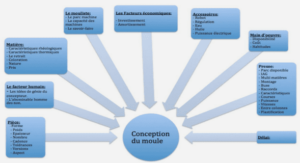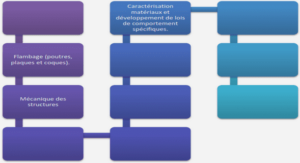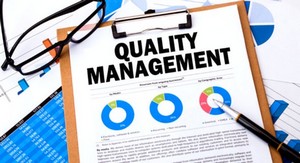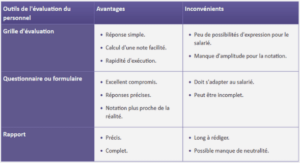THE MANAGEMENT MODEL OF CONTROL AND AUTONOMY
Management has developed with several different fonTIs, and there are two basic types: control and autonomy. And in this part, necessary knowledge about control and autonomy in management is presented .
The definition and foundations of control
In this part, fundamental knowledge about control is stated, it primarily includes: the concept of control, its process and types, the factors that affect control, as weIl as the relevant theories about control.
The definition of control
Control refers to the management process of monitoring activities to make sure that they are fini shed as what have been put forward and modifying any important deviations (Robbins & DeCenzo, 2005). Through having an appraisal of what concrete activities have been finished and having compared with the actual performance to the desired standard, decision makers can be really clear about if the jobs which have been done are up to the standards. Generally speaking, there are three types to control: market control, clan control and bureaucratic control. Here in this paper, it specifically indicates the bureaucratic control. Bureaucratic control emphasizes organizational authority and depends on administrative and hierarchicai mechanisms, such as ruIes, regulations, procedures, policies, well-defined job descriptions, standardization of activities and budgets to make sure that the employees perform proper behaviors and meet performance standards (Bedworth & Bailey, 1999).
The process of control
In the process of control, three different and separate steps should be considered: firstly, measuring the actual performance; secondly, making comparison between the desired standard and the actual performance; thirdly, taking necessary actions or measures to correct the deviations or insufficient performance (Taguchi et al. , 1989).
When it cornes to the first step in control, it 1S a great necessity to think about how to measure. Generally speaking, there are four factors for managers to consider: statistical reports, personal information, written reports and oral reports (Taguchi et al. , 1989). Every source of information has its advantages as weIl as disadvantages. However, application of them in a combined way would undoubtedly enhance the quantity of relevant messages and the possihility of more accurate and valuable information for managers to consider. Through personai observations, managers can obtain the first hand and direct information about the actual performance as activities no matter major or minor can be observed. Besides, managers may read between hnes. Because of the popularity of using of computers, managers become increasingly dependent on statistical reports. The measuring device also contains bar chart, graphs and numericai fonns in types of difference. Statistical information has strengthened of visualizing messages easiIy and conveying information effectively and, however, it has evitable shortcomings, for instance, omissions of sorne significant and subjective information. Oral reports, such as meetings, face to face conversations, conference, phone calls, and so on, can also sometimes effectively provide messages (Dyl, 1988). This form of measure device has the advantage of filtering infonnation, pen11itting direct and swift feedbacks. When it refers to written reports, it allows greater conciseness and comprehensiveness relative ta oral reports, but it is slower in time. What is more important is what the manager measure. This is because a choice of the improper criteri a wo uld undoubtedl y lead to serious dysfunctional res ults and what are se lected by managers to measure also guide and determine, to a large extent, what employees in the company are good at (Waters, 2003).
Some contro l measures are commonl y appli ed in almost a il control situations, and examples are fo und in absenteeism, turnover or employee satisfaction, as ail managers guide the behav iors and activ iti es of other people (Taguchi et al. , 1989). However, it is of signifi cance to understand that the existed differences and di versity of activiti es between managers. For instance, marketing managers ofte n takes advantage of number of consumer visits fo r each employee responsibl e fo r sales, the quantity of consumer impressions per advertisement tool, or the market share. Different from managers who are in charge of marketing, leaders in the administration department of a government division are favorabl e to make use of the quantity of orders each hour, the number of pages of offi ci al document they often process or the quantity of services ca li they have handled Vo llmann & Berry, 1997).
As fo r the compariso n between the desired goals and actu al performance, the most important matter to keep in mind is to und erstand the tolerabl e range of variati on (Taguchi et al., 1989). That is to say, deviati ons within the planned range can be accepted and considered as reasonabl e and any deviation beyond should draw managers’ spec ial attention. Therefore, in term of comparing the actual perfo rmance with the planned aims, it is of a great importance to paya speci a l focus on the orientation and size of the variation.
And wh en it comes to the last step in the process of control, there are three choices for managers to se lect: they do not anything, they modify the actual acti vities to comply with the pl anned goals, and they make adjustments in the criteri a to adj ourn to the reali ty (Taguchi et al., 1989). The modifi cati on of the actual performance often takes place when there are defects in the staff’s acti viti es compared with the criteri a (A nthony et al., 1972). Under such situation, managers make changes in the fo llowing respects, fo r instance, changing of personnel, redesigning of occupations, or modifications in structure, strategy or training programs. However, the deviations of the actual performance from the planned goals, sometimes, are the problems of the goal setting instead of the employees’ activities, for example, the organizational goals are far from the reality because of errors made by decision makers. Therefore, it is standards rather than performance needs to be corrected.
CHAPTER 1 INTRODUCTION |





